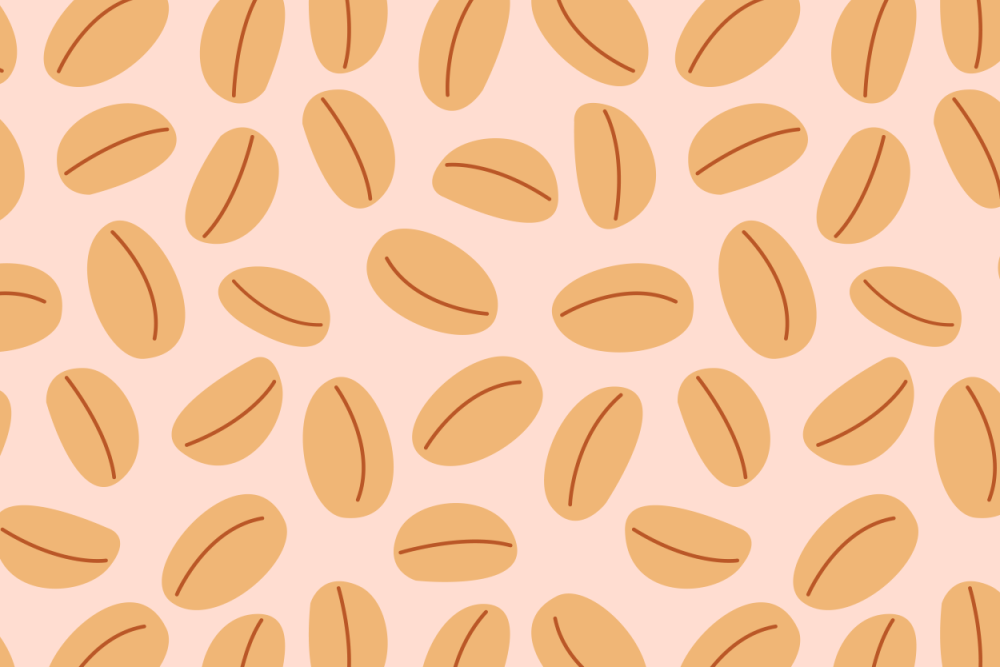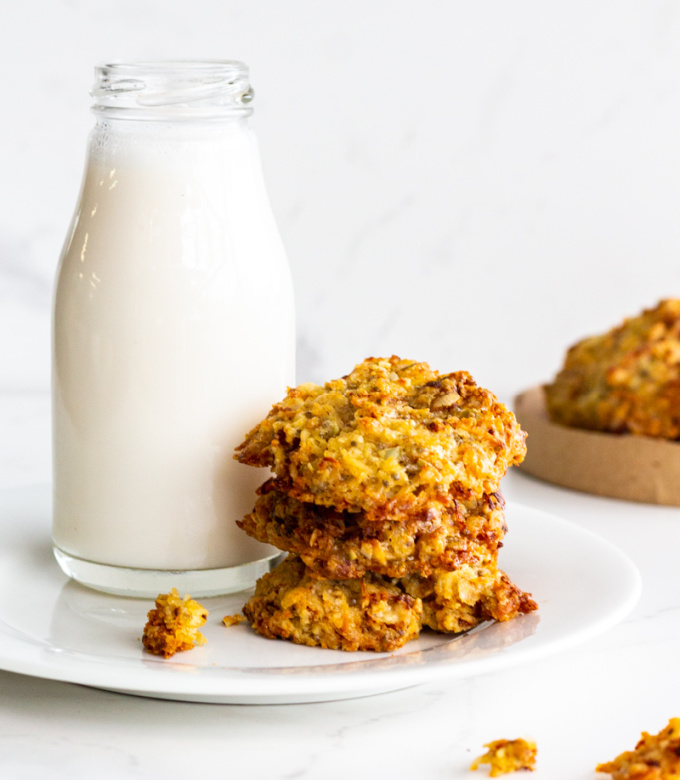Oats can be tricky to navigate on the low FODMAP diet as the manufacturing processes can affect the FODMAP levels. Do you know which ones to choose for breakfast?
What are the different types of oats?
Oats can be categorised into several different groups:
- Steel-cut oats are where the whole oat groats (the oat kernels) are cut into several pieces. They can also be called Irish or Scottish Oats and they have the longest cook time.
- Rolled oats (also called old fashioned oats or whole oats) are created when oat groats are steamed and rolled into flakes.
- Instant (or quick) oats are pre-cooked, dried and then rolled. They are thinner than rolled oats and often lose their texture as they are cooked.
What Serving Size Should I Try?
There are plenty of low FODMAP oat options you can enjoy. All you need to do is use the recommended low FODMAP serving size if you are in the first phase of the low FODMAP diet. All of the amounts listed below are the uncooked measurement.
- ½ cup of rolled oats
- ¼ cup of quick oats
- ½ cup of scotch oats/oat groats
Oats can contain moderate to high amounts of FODMAPs as you increase the serving size beyond the recommended amounts listed above. Check the Monash University FODMAP Diet App for more information about how the FODMAP levels change at larger serves.
Why do different oat products contain different FODMAP levels?
Quick or instant oats have a smaller recommended low FODMAP serving size and contain moderate levels of FODMAPs in a half cup serving size. Elizabeth Ly, a laboratory assistant at Monash University, hypothesises that different manufacturing processes used for the oats might cause the carbohydrate content in oat products to be different:
“For example, quick oats can possibly be dried with the liquid that they were cooked in, whilst steamed rolled oats can potentially remove some carbohydrates. Further, different heat application e.g. foods are steamed at temps higher than 100 degrees, whereas foods are boiled at 100 degrees. Rollers used to flatten oats are heated; the heat applied can also affect the carbohydrate content.
Please note that the effects of these processes have not been investigated by Monash University, so we can only hypothesise at this point” (personal communication via email, 04/03/2016).
While in the first phase of the low FODMAP diet, all you need to do is follow the low FODMAP serving recommendations for oats listed in the Monash University FODMAP Diet App or from the list above.
Do the oats need to be wheat/gluten free?
Oats can become contaminated with wheat/gluten during the manufacturing process. However, the amount of contamination isn’t an issue when you are on the low FODMAP diet. This means you don’t need to buy the expensive wheat/gluten free oats when you are on the low FODMAP diet.
If you have coeliac disease, then talk to your doctor and dietitian before trying gluten free oats. The term ‘gluten free oats’, ‘pure oats’ or ‘uncontaminated oats’ means the oats do not contain traces of wheat, rye or barley (3, 4). However, oats naturally contain a protein called avenin which is similar to gluten (3, 4). Approximately one in five coeliacs will react to wheat/gluten free oats. In New Zealand and Australia oats are not allowed to be called ‘gluten free’ and if a person with coeliac disease wants to try uncontaminated oats then it is recommended that they talk to their doctor or dietitian first (3, 4).
Are you ready to take control of your gut symptoms?
No thanks, my gut is perfect.
Article continues below
Simple Low FODMAP Oat Recipes
Oats are a great source of fiber and provide lots of nutritional benefits so we encourage you to include them in your diet if you can. Here are some simple and delicious low FODMAP oat recipes to help.
Caramelised Banana with Low FODMAP Porridge
This recipe has been super popular on our website as well as in The Gut Friendly Cookbook!
It features creamy porridge topped with gorgeous caramelised bananas. This breakfast is nourishing and sweet with little hints of cinnamon and vanilla.
Blueberry & Peanut Butter Overnight Oats
These overnight oats make for the perfect healthy, easy and delicious breakfast. We’ve even added chia seeds to the mixture to give you an extra boost. So say bye-bye to complicated breakfasts and hello to these creamy, dreamy overnight oats.
ANZAC Biscuits
These low FODMAP ANZAC biscuits are little gems. They are chunky and chewy with little hints of coconut and sweetness all rolled into a golden biscuit.
They make a lovely afternoon snack with a cup of tea and are so easy to make from pantry staples.
You can make these with rice flakes or swap in rolled oats.
Strawberry & White Chocolate Bake Oatmeal
So this was meant to be a breakfast, but when I discovered white chocolate in the pantry, this quickly turned into a dessert recipe instead! This gorgeous low FODMAP baked oatmeal recipe is deliciously sweet with pops of strawberry and hints of vanilla and white chocolate. It’s yummy by itself or you can add a drizzle of low FODMAP yoghurt.
Final Thoughts
Oats can be included on the low FODMAP diet and there are lots of yummy recipe options for you to explore. Just remember to use the recommended low FODMAP serving size if you are in the first phase of the low FODMAP diet.
Image credit: DI+YU/Shutterstock.com















Hi,
I would like to use oat flour and I plan on making it my self by blending (using a foodprocessor) coarse oatmeal (organic and gluten free). Will that work or will the blending process change the FODMAP of the product?
Kind regards
Rikke
Rikke,
I too am interested in oat flour with regards to FODMAP content. I’d love to see an answer to your question!
Hi Ellie,
Oat flour is currently untested for FODMAPs. We do know that when it is made at home it is typically made by grinding rolled oats. Due to this, we would suggest you test your tolerance to 26g serve of homemade oat flour and then increase to a 52g serve. Avoid larger serves as these might contain higher levels of FODMAPs.
Is Glutenfreeda instant oatmeal ok to have on Low FODMAP diet (the variety pack – maple raisin with flax, brown sugar with flax, and apple cinnamon with flax)?
Hi Barbara,
Okay so instant oatmeal is only low FODMAP in 23g serves (so the oats in these pouches would possibly contain moderate amounts of oligosaccharides). Additionally, the maple raisin and apple cinnamon would be considered high FODMAP flavours. Instead we would recommend grabbing some plain rolled oats and create your own flavours using maple syrup/brown sugar then mixing through 1 tbsp of raisins or cranberries (these are low FODMAP serves). I hope that helps!
What can I eat with a breakfast of 1/2 cup raw oats and lactose free milk? I prefer a plant based diet to meat.
Hi Mary Anne,
Thanks for commenting. We suggest adding a serving of low FODMAP fruit to your serving of oats along with low FODMAP yogurt. This could be lactose free yoghurt or coconut yoghurt (just check they don’t have added high FODMAP ingredients). You could also add a sprinkle of low FODMAP nuts or seeds to make it a more filling breakfast. If you don’t want to use lactose free milk then you could use a calcium fortified almond milk instead as this would also be a low FODMAP options.
Would cooking method make a difference to the amount of FODMAPs with oats?
I find that I can eat flapjacks without worrying about quantity but if I eat a portion of porridge (50g oats, almond milk, nature’s store choc spread) each day then after a few days I feel unwell. Rice porridge is just not the same. Thanks.
Hi Fumblina,
Thanks for commenting. How much of the Nature’s Store Choco Spread are you having? That spread has hazelnuts which contain GOS and oats can also contain GOS (as well as fructans) in moderate to large serves. This means if you are sensitive to oligosaccharides, and are having these both in the same meal, it might be too much for your system.
Oatmeal can be savory as well. I eat it it regularly with a small serving of chicken or pork. A little jam with it is awesome.
Tania that sounds like a great way to enjoy it. Thanks for sharing!